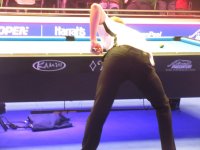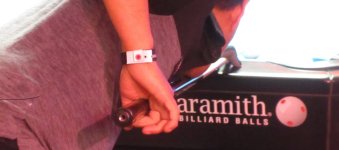irspow
Member
First, why I am experimenting with these changes. A very loose grip, with a gap between web and top of cue, often leads to erratic contact point and cue jumping off of my bridge hand. Also the loose grip and firm stroke makes that jumping effect even worse. I try to use same acceleration on every stroke, only varying backswing length ro adjust the speed of shot. However, trying to get the perfect backswing length for each shot speed leads to either being slightly too short or too long.
My thinking on these changes has led me to use a firmer grip with no gap and always using a backswing that I know is slightly too short. These changes have eliminated the erratic cue contact points, the elimination of cue stick jump, and ensuring that I accelerate and not decelerate into contact. Speed control has improved and better cue ball action have resulted.
My question is if these changes are good, or are they band-aids for other problems that will prevent me from improving long term?
My thinking on these changes has led me to use a firmer grip with no gap and always using a backswing that I know is slightly too short. These changes have eliminated the erratic cue contact points, the elimination of cue stick jump, and ensuring that I accelerate and not decelerate into contact. Speed control has improved and better cue ball action have resulted.
My question is if these changes are good, or are they band-aids for other problems that will prevent me from improving long term?

